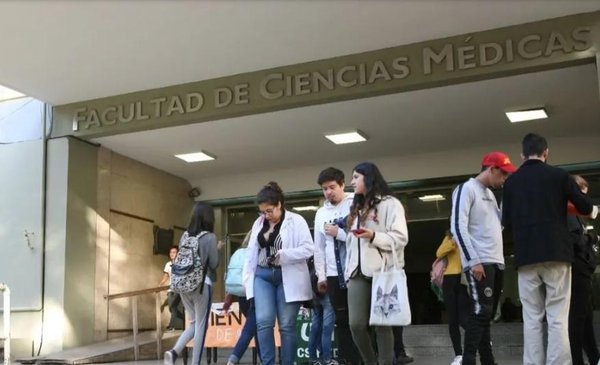The Faculty of Medicine enrolls a high percentage of students from abroad/per day
The revelation of the student composition in the various faculties of the National University of La Plata (UNLP), as this newspaper has already predicted in other articles, confirms in medical sciences the strong increase in recent years of students from other countries: 24 percent of the total students come from abroad (and Only 7 percent come from the country’s interior provinces.)
However, this percentage, which extends throughout the six years of study, does not fully reflect the reality of the university community. In the first year, this phenomenon seems more evident, as more than half of them are immigrants. Naturally, over time and as they progress in their careers, this percentage is very likely to increase in the senior years taking into account newcomers and those already there.
This socio-demographic analysis was conducted by the Sectoral and Regional Development Laboratory and was based on data provided by the Supreme Center for Information Processing (CESPI). The goal was to provide statistical results on student composition and graduation trends at this academic institution.
Of all incoming students in 2023, 53.7 percent (3,981 students) are foreigners, while 46.3 percent (3,426 students) are Argentine. These unofficial statistics, obtained by EL DIA, show that out of every 100 students from somewhere in our country, about 116 foreign students started their higher education career in our city.
Most numerous, for a short time
The number of students from Ecuador has grown by 80 percent compared to 2021 and constitute the largest foreign community. One of the peculiarities of the group is that, in general, they carry out their academic activities until the second year in the city and then return to their country to continue from the third year at a university that already requires admission and accepts 100 percent equivalencies.
While the university prides itself on “diversity and openness,” some questions arise regarding sustainability and the institution’s ability to confront this new reality.
On the one hand, the surplus due to the number of students, and on the other hand, tariff issues, which generates concerns about the financing of public education.
The numbers speak for themselves: from 396 participants in 2015, to more than 3,000 in 2016 and 2017, until it jumped to 3,992 pre-registrants for 2019, according to UNLP statistics. An increase of 1,000 percent in just over three years.
While the total number of students doubled during the same period: from 3,582 to 7,390. Without official data yet, it is estimated that about 7,800 people have signed up this year. But the quantitative steals space from the qualitative, and the question about the quality of training remains silent, because the rhetoric of inclusion seems much more seductive.
The Higher Education Law (LES) that imposed in October 2015 unrestricted access to medicine has increased the number of jobs in which excellent professionals have emerged.
The consequences were predictable: a significant increase in the number of students enrolled, with nearly eight thousand students currently enrolled.
In this sense, this rapid and overwhelming growth in the student population has exposed the limitations of the teaching staff in terms of infrastructure, classrooms and teaching resources, posing challenges in the quality of education and student experience. There is no physical space to properly follow, for example, class dictation.
Although the exclusion into medicine has been in effect since 1992, the unpreparedness of this huge student body has put the college at the center of a heated debate about the merits and demerits of the new procedure that has been in place for eight years. .
Ultimately, finding the balance between openness to diversity and sustainability of higher education is a complex challenge. UNLP must address these questions strategically, ensuring that the quality of education is not compromised and that the mutual contribution between national and international students is not compromised, with the budget that the country decides to invest each year.
UNLP faces a crossroads in its quest to maintain its position as a free public university of excellence, while welcoming a large and increasingly diverse community of students, including from other countries. Careful planning and investment in infrastructure and resources will be essential to ensure that the local university is able to achieve its mission of quality education and comprehensive development.
In medicine, 24% of students come from abroad, according to a survey

“Social media evangelist. Student. Reader. Troublemaker. Typical introvert.”


:quality(85)/cloudfront-us-east-1.images.arcpublishing.com/infobae/7TXNTX4Z6ZADNGBBYTUT45QETM.jpg)
:quality(85)/cloudfront-us-east-1.images.arcpublishing.com/infobae/TR43PX4FQRCGJOYTK6DVVHHXGE.jpg)


More Stories
National Academy of Medicine and PAHO present reports of the Colombia General Physician Competency Forum – PAHO/WHO
Academic excellence in medical sciences is recognized at Granma.
Medical simulation has revolutionized the training of doctors in the country.